Intelligent And Playful Dolphins
Category : Aquatic World
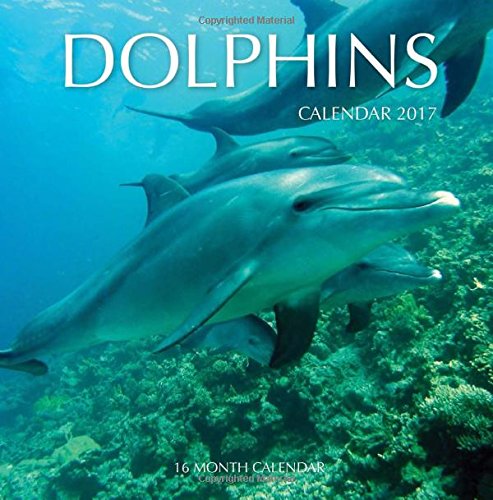
Dolphins Calendar 2017: 16 Month Calendar
Dolphins are well known for their agility and playful behavior, making them a favorite of wildlife watchers. Many species will leap out of the water, spy-hop (rise vertically out of the water to view their surroundings) and follow ships, often synchronizing their movements with one another. Scientists believe that dolphins conserve energy by swimming alongside ships, a practice known as bow-riding.
Dolphins live in social groups of five to several hundred. They use echolocation to find prey and often hunt together by surrounding a school of fish, trapping them and taking turns swimming through the school and catching fish. Dolphins will also follow seabirds, other whales and fishing boats to feed opportunistically on the fish they scare up or discard.
Dolphins have several highly developed forms of communication. They have a “signature whistle” which allows other individuals to recognise them.Dolphins are incredibly social animals. They live in groups and cooperate with each other to get food and in raising offspring (calves).A dolphin calf nurses for up to two years. Calves stay with the mothers anywhere from three to eight years.
Because dolphins are mammals, they need to come to the surface of the water to breathe. Unlike land mammals that breathe and eat through their mouths, dolphins have separate holes for each task. Dolphins eat through their mouths and breathe through their blowholes. This prevents the dolphin from sucking up water into the lungs when hunting, reducing the risk of drowning.
Dolphins have acute eyesight both in and out of the water. They hear frequencies 10 times the upper limit of adult humans. Their sense of touch is well-developed, but they have no sense of smell.
Most dolphins are small, measuring less than 3 metres (10 feet) in length, and have spindle-shaped bodies, beaklike snouts (rostrums), and simple needlelike teeth.
Dolphins are capable of living in either fresh or salt water. Distributed worldwide in all oceans and seas except the Caspian and Aral seas, they range from equatorial to subpolar waters and also can be found in many major river systems.
There are forty species of dolphins and they vary greatly in size. The smallest of the dolphin species, Maui’s dolphin, is around 4 feet long- or as tall as a 9 year old kid – and weighs around 90 lbs. The largest member of the dolphin family is the killer whale, which can grow to 30 feet long. Dolphins feed on fish and squid. They swallow fish whole, despite having 100 teeth in their mouths. The teeth are used to grasp prey. An adult dolphin may consume 30 pounds of fish or more in a single day.
The common and bottlenose dolphins are widely distributed in warm and temperate seas. They are swift swimmers; the bottlenose can attain speeds of nearly 30 km/hr (18.5 mph) in short bursts, and common dolphins are even faster.They are superb divers and have been known to dive as deep as 1,000 feet.
Known for their playful behavior, dolphins are highly intelligent. They are as smart as apes, and the evolution of their larger brains is surprisingly similar to humans.Dolphins are altruistic animals. They are known to stay and help injured individuals, even helping them to the surface to breath. Their compassion also extends across the species-barrier. There are many accounts of dolphins helping humans and even whales.
Dolphin Body Signals
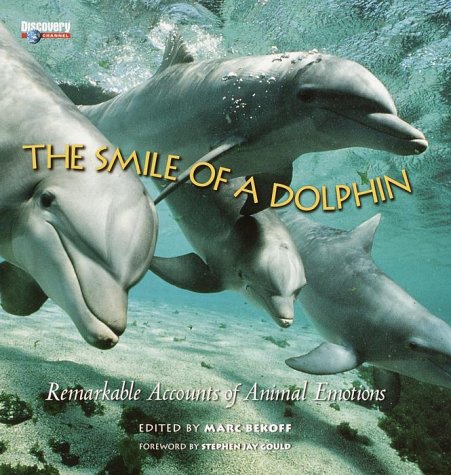
The Smile Of A Dolphin: Remarkable Accounts Of Animal Emotions
Dolphins produce two kinds of vocal signals: pure tones and pulsed sounds.
Pure tones can take the form of whistles , chirps and screams.Scientists refer to these as ‘frequently modulated sounds’, which means that the pitch of the sound changes with time – rising and falling.
Scientists have leaned that dolphins are amazing vocal mimics – able to reproduce manmade whistle structures with precise accuracy. Dolphins produce whistles during social situations, when separated from friends, when excited, when happy and when panicked.
Dolphin Species
There are three different types of dolphins, marine dolphins, river dolphins and porpoises. Some you would never think were part of the dolphin family like the “Killer Whale or Orca”.
A.Marine Dolphins
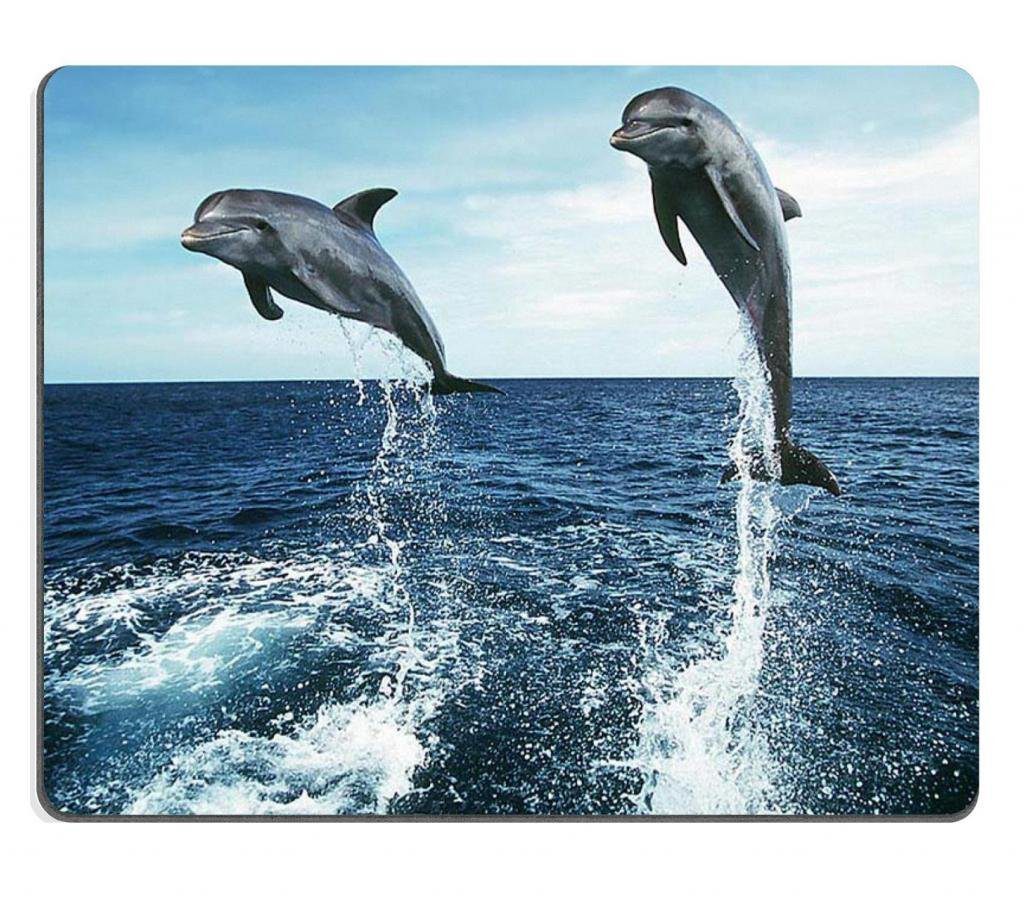
1.White Beaked Dolphin
2.Short Finned Pilot Whale
3.Risso’s Dolphin
4.Pantropical Dolphin
5.Long-Finned Pilot Whale
6.Orcas (Killer Whale)
7.Hourglass Dolphin
8.Heaviside’s Dolphin
9.False Killer Whale
10.Commerson’s Dolphin
11.Bottlenose Dolphin
12.Striped Dolphin
13.Peale’s Dolphin
14.Pygmy Killer Whale
15.Melon-Headed Whale
16.Irrawaddy Dolphin
17.Hector’s Dolphin
18.Frasier’s Dolphin
19.Dusky Dolphin
20.Clymene Dolphin
21.Black Dolphin
22.Southern Right-Whale Dolphin
23.Rough Toothed Dolphin
24.Short Beaked Common Dolphin
25.Pacific White-Sided Dolphin
26.Northern Right-Whale Dolphin
27.Long-Snouted Spinner Dolphin
28.Long-Beaked Common Dolphin
29.Indo-Pacific Hump-Back
30.Atlantic White Sided Dolphin
31.Atlantic Hump-Backed Dolphin
32.Atlantic Spotted Dolphin
White Beaked Dolphin
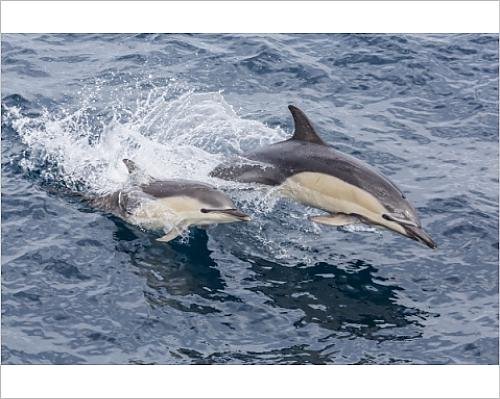
Photographic Print of Long-beaked common dolphin (Delphinus capensis) leaping near White Island
This species is endemic to the temperate and sub-arctic waters of the North Atlantic as far north as the White Sea and occasionally as far south as the Spanish coast. It is common off the Norwegian coast and in the North Sea and is often found in the Baltic Sea as well. Less are found in the northwest Atlantic but there are abundant populations off Labrador and they are found as far south as Cape Cod.
B.River Dolphins
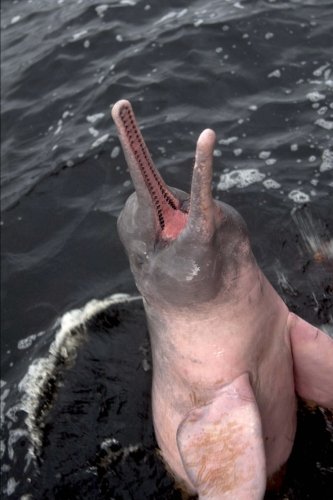
Amazon River Dolphin Journal: 150 page lined notebook/diary
1.Baiji, or Yangtze river Dolphin
2.Boto, or Amazon River Dolphin
3.Franciscana or La plata Dolphin
Yangtze river Dolphin

Witness To Extinction: How We Failed to Save the Yangtze River Dolphin
The Baiji (Yangtze) Dolphin is a species that is found along 1,700km from the Three Gorges to the mouth of the Yangtze River, China.
Classification: This species is the only member of this genus. The Latin, Leipo (‘left behind’) refers to the restricted distribution, whilst vexillifer means ‘to bear a banner’.
Local Names: Chinese River Dolphin; Yangtze Dolphin; Yangtze River Dolphin; Beiji; Pai C’hi; Whitefin Dolphin; Whiteflag Dolphin.
C.Porpoises

Porpoise Vaquita Baby Plush Soft Toy by Hansa. 31cmL. 6804
1.Dall’s Porpoise
2.Finless Porpoise
3.Harbor Porpoise
4.Spectacled Porpoise
5.Vaquita Porpoise
6.Burmeister’s Porpoise
Dall’s Porpoise
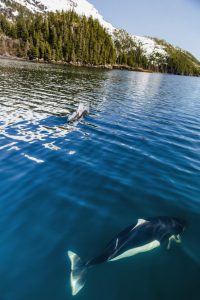
Dall’s porpoises occur throughout the North Pacific Ocean. This species is also found in the adjacent Bering Sea, Sea of Japan, and Okhotsk Sea.
Dall’s porpoises are “high strung,” fast swimming members of the porpoise family and are common in the North Pacific Ocean. They can reach a maximum length of just under 8 feet (2.4 m) and weigh up to 480 pounds (220 kg). Males are slightly larger and thicker than females, which reach lengths of just under 7 feet (2.1 m) long.
Dall’s porpoises have a relatively small, triangular head with little or no beak and a thick, robust body. The flippers are small, round, and located forward on the body. The dorsal fin is positioned in the middle of the back, triangular in shape, and often cant, or angles, forward.
Dolphin Habitats
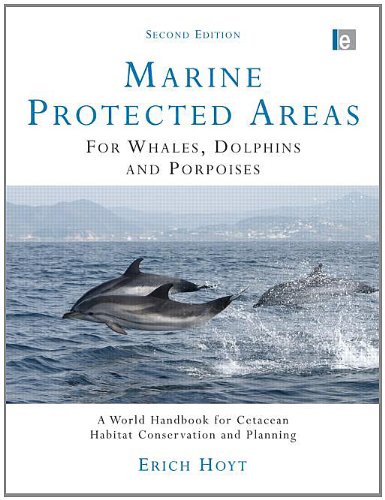
Dolphins are found living in bodies of water around the world.Most of them live in saltwater but they can also live in freshwater locations. Only a handful of the species though are known to thrive in freshwater regions. They tend to stick to the shallow areas of the water found along the continental shelves. The types of dolphins you will find depend on the species though in terms of the location.
Dolphins tend to like areas that have warmer temperatures too. However, sometimes they are found in colder water due to the need for food.Studies show that the habitat of the dolphin is quite diversified due to environmental factors and food accessibility.
Migration is a big part of life for all dolphins. They have to move where there is food so the amount of migrating they will do can vary. Some of them have been observed in a very small area all the time due to plenty of food being found there. The migration can be for a short period of time or until food resources have started to be replenished.
This is also why some locations where there used to be dolphins either have very few or they haven’t been seen for a while. They aren’t going to be returning to locations where the habitat is too polluted or there isn’t enough food for them to survive. Even changes to the water temperatures can be reasons for them no longer to return to locations they once called home.It is believed that global warming plays a vital role in the migration for dolphins as it affects their supply of food.
The dolphin can be very vulnerable to problems in their environment. For example pollution due to the sensitivity of their skin. Loss of habitat is also a problem due to the fact that so many humans have now taken to enjoying a variety of water related activities in these same locations.
In the wild, dolphins face many manmade threats to their well-being. There are direct threats from countries that still permit the hunting of dolphins for food or their capture for entertainment. But there are even greater threats from indirect sources like industrial fishing where dolphins are caught in large numbers as bycatch.
Feeding wild dolphins disrupts their social groups which threatens their ability to survive in the wild. Young dolphins do not survive if their mothers compete with them for hand-outs and don’t teach them to forage.
The “Flipper myth” of a friendly wild dolphin has given us the wrong idea. Flipper was actually a trained, captive dolphin who did not bite the hand that fed him. However, truly wild dolphins will bite when they are angry, frustrated or afraid. When people try to swim with wild dolphins, the dolphins are disturbed. Dolphins who have become career moochers can get pushy, aggressive and threatening when they don’t get the hand-out they expect.
Whales and dolphins may travel considerable distances but they have key areas which are critical to them, as ongoing ‘homes’ or for seasonal breeding or feeding grounds. If we protect these areas well, the chances of survival for whole populations improve.A marine reserve usually has the highest level of protection. This can mean no commercial fishing or industrial use of the area.
We urgently need to create effective marine protected areas and reserves – safe havens that help to preserve the habitat critical for whales and dolphins in all the oceans of the world.
To protect them from the dangers of pollution, fishing nets, hunting, live-capture and to safeguard the places that they call home – before more of these vulnerable and endangered populations disappear from our planet.We can make sure that those who represent us in government make the right policies, to have areas where dolphins and whales are truly safe.
If you have any information,questions, or feedback you would like to include in this post.
Please email momo19@naturekingdoms.com or leave your comments below.
10 Comments
jCamden
November 14, 2016 at 10:39 pmWho doesn’t love dolphins 🙂 They’ve always amazed me and any chance I’ve had to see them in person has always been astounding! I had no idea there were so many different kinds of dolphins though and loved seeing all these pictures! The ones I’m most familiar with are bottlenose dolphins.
I like the idea of creating reserves to protect the dolphins but in the end would this really just be like caging them up? Are there other solutions so that they can remain free but still protected in the ocean?
-Jessica
momo19
November 15, 2016 at 9:44 amHello jCamden,
I agree all animals including dolphins have the right to live in liberty, free from slavery, torture, experimentation, the threat of unnatural death and the right for them to live freely in their natural habitats, and when thats not possible, to be given the best quality of life and welfare possible in captivity (such as sanctuaries).
The thousands of miles of lines and nets set in the oceans each day catch a staggering number of unwanted creatures, many of which die by the time they are hauled up and discarded overboard. This bycatch, as it is called, poses a major threat to the survival of certain turtles,dolphins, sharks, and other endangered marine species and to the long-term sustainability of fisheries.
Simple and inexpensive modifications to fishing gear can dramatically reduce bycatch in many fisheries.
Using innovative, practical, and cost-effective gear designs that safeguard marine life such as dolphins while enabling fishers to better target their intended catch.
Sending text messages is the most popular means of cell phone communication worldwide.It is quick, direct, and often much cheaper than calling, and it works well even in remote areas where signals are too weak to transfer the spoken word. Through texting, conservation advocates could mobilize action, obtain information, and elicit support.
A global network of hotlines could react to a wide array of ocean issues such as oil spills.People witnessing such events could text an immediate report to the appropriate hotline and demand an official response. People whose mobile phones take photographs and record precise geographic coordinates could supplement their words with additional evidence.
By mobile phone text messaging, nearly everyone could contribute to protecting our marine life!
Cathy
December 1, 2016 at 6:21 amI truly enjoyed reading this article and watching the video at the end. I work with small animals on a daily basis, but I’ve very little experience with aquatic mammals.
The way they help the fishermen – wow! I’ve heard that they are intelligent creatures, but I didn’t know that they could do such a thing. This type of unique relationship should be treasured and make people more aware of taking good care of our sea mammals.
momo19
December 1, 2016 at 5:20 pmHello Cathy,
Thanks for taking the time to leave a comment.
I agree taking good care of our sea mammals is essential.If plastics, ocean acidification and destructive fisheries destroy marine life to the point where the seas are just plankton and jellyfish then many people around the world would probably starve.
With the breakdown of food chains and other natural processes in the sea, it is likely that it would no longer be able to recycle our wastes and we would gradually be suffocated by our own effluent.
The final nail in the coffin for mankind and the majority of terrestrial life could come if the ocean is no longer able to balance the absorption of carbon dioxide and production of oxygen.
The conservation of our oceans will continue to lose against commercial interests unless its value can be made more explicit in economic terms. Politicians continue to put the protection of the marine environment low down on their list of priorities.
We need to remember (and to make our politicians remember) that the health of the ocean is of paramount importance to us, because it links back to us in so many ways!
Danelle
February 25, 2017 at 2:37 amI have always loved dolphins and think they are one of the most amazing animals! I never realized how many different kinds of dolphins there are, some I have never seen or heard of before. This is a great article explaining all the differences and their uniqueness. I love all the bright and colorful pictures and videos. They really are amazing!
momo19
February 25, 2017 at 2:03 pmHi Danelle,
Its great you enjoyed reading this article.There is no doubt that dolphins are one of the most interesting forms of aquatic life.
Over the past 50 million years the brains of dolphins have evolved and expanded dramatically in size.
At the same time, their bodies have shrunk, their teeth have become smaller and they have developed high-frequency hearing.
The limbic system in a dolphin’s brain is responsible for the emotions in the same way as it is in human brains.
They are also highly social chatterboxes who recognise themselves in the mirror, giggle, feel despondent, stroke each other, adorn themselves, use tools, introduce themselves, rescue one another from dangerous situations, form alliances, throw tantrums, gossip, scheme, empathise, seduce, grieve, comfort, anticipate, fear, and love – just like us.’
These similarities may explain why dolphins are so keen to befriend humans.
Roy
July 24, 2017 at 8:46 amThank you for all this information about dolphins. Wow, honestly didn’t realize that there were so many different kinds. I love dolphins and one of the things on my basket list is to swim amongst them. There are so many real-life tales of dolphins helping humans. My favorite ocean animal. They should be allowed to swim free although it seems that they don’t mind being around humans.
momo19
July 24, 2017 at 9:54 amHello Roy,
Its great you enjoyed reading this article about dolphins.
There are many instances where wild dolphins cooperate with local fisherman to capture fish together, in places as far apart as Brazil, Mauretania and Myanmar.
The dolphins are not taught to do this by the humans; in most cases the dolphins originally initiated the behaviour. They will herd fish towards the waiting fishermen and signal to them when to deploy their nets.
Perhaps more surprising is that dolphins will sometimes chose to intervene in a chance encounter to save another creature from a different species. For example, they have been observed apparently trying to help whales in distress who have become trapped in shallow water.
There are also many stories over history of dolphins helping people in distress in the sea.
Why they should do this is a mystery, especially as man has killed countless dolphins over the years, and continues to do so.
nba live 19 reddit
July 8, 2018 at 2:24 amnba live 19 reddit
Lovely just what I was looking for. Thanks to the author for taking his clock time on this one.
mama bear shirt
November 3, 2019 at 2:34 pmmama bear shirt
Very nice site, I just came to know of it yesterday evening. Bookmarked this and also stumbled upon it. Thanks a lot,You had some nice ideas in the post, I enjoyed scaning it.